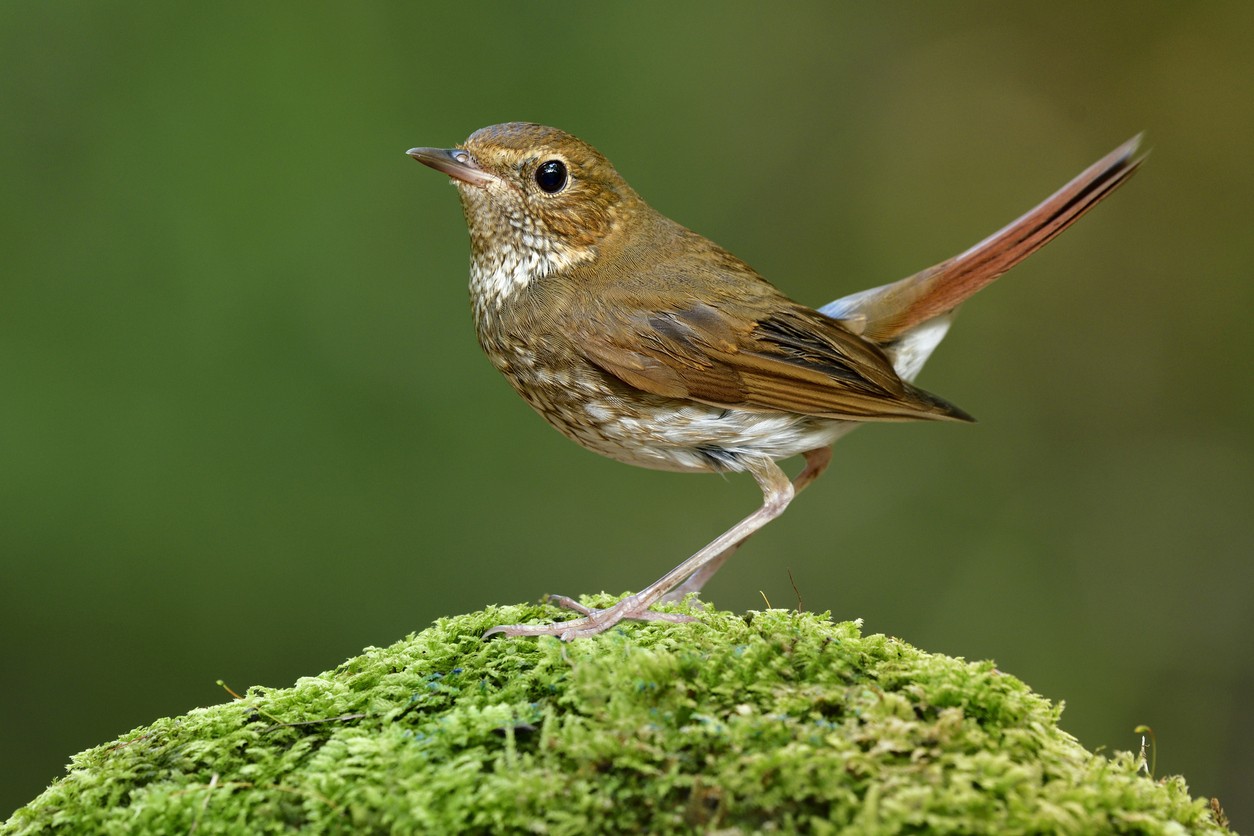Rufous-tailed Robin
A species of Nightingales and Allies Scientific name : Larvivora sibilans Genus : Nightingales and Allies
Rufous-tailed Robin, A species of Nightingales and Allies
Botanical name: Larvivora sibilans
Genus: Nightingales and Allies
Content
Description General Info

Description
The rufous-tailed robin (Larvivora sibilans) is a small passerine bird. Its breeding range extends from southern Siberia and the Sea of Okhotsk to southern China and southeastern Asia. It has a number of alternative English names: pseudorobin, red-tailed robin, Swinhoe's red-tailed robin, Swinhoe's robin, Swinhoe's pseudorobin, Swinhoe's nightingale or whistling nightingale. 
Size
14 cm
Nest Placement
Shrub
Feeding Habits
Rufous-tailed Robin subsists primarily on insects, including ants, beetles, and spiders. Rufous-tailed Robin's foraging is characterized by active searching on the ground, using keen eyesight to locate prey. A notable dietary trait is the specialization in various invertebrates, setting it apart from other species.
Habitat
Woodlands and damp broad-leafed woodland with fallen trees and thick undergrowth, particularly spruce and fir with willow, alder, birch, poplar and bird cherry, mainly lowland, forests, areas with scattered trees, scrubland, parks and gardens
Dite type
Insectivorous
General Info
Feeding Habits
Bird food type
Behavior
This is an elusive bird and difficult to spot as it lurks among concealing branches, remaining stationary for considerable periods. It is terrestrial in its habits and insectivorous, mainly feeding on ants, beetles, spiders and other invertebrates. It often flicks its tail in a characteristic way. Breeding takes place in June or July. The nest is cup-shaped and is often in a hole in a tree or on a stump and usually quite near the ground. It is made from dead leaves, grasses and moss and lined with finer materials. There are usually five or six eggs, either plain pale blue or blueish-grey irregularly blotched with brown. Migration southwards starts soon after the nestlings are reared, in late August in Russia and a few weeks later in Korea. The birds arrive in the vicinity of Hong Kong in November and also overwinter in Thailand, Laos and Vietnam. In the spring they move northwards again, reaching Korea in May and Russia by early June. 
Distribution Area
The rufous-tailed robin is a migratory insectivorous species breeding in forests in the taiga of northeastern Asia and south to Mongolia, and wintering in Southeast Asia and southern China. It is a rare vagrant to Western Europe. The first record for this bird in Europe was on Fair Isle, Scotland in October 2004. Another was seen in Poland in January 2006. More recently, it was seen in Norfolk, England in October 2011 and again in September 2013, and in Denmark in October 2012. It is a bird of coniferous woodlands and damp broad-leafed woodland with fallen trees and thick undergrowth, particularly spruce and fir with willow, alder, birch, poplar and bird cherry. It is mainly a lowland species but sometimes occurs at altitudes of up to 1,200 m (4,000 ft) above sea level. In its winter quarters it is found in forests, in areas with scattered trees, scrubland, parks and gardens. 
Species Status
The rufous-tailed robin is considered by the IUCN to be of least concern. This is because it has an extremely large range, appears to be quite common within that range and the population seems to be stable. 


Scientific Classification
Phylum
Chordates Class
Birds Order
Perching birds Family
Old world flycatchers Genus
Nightingales and Allies Species
Rufous-tailed Robin